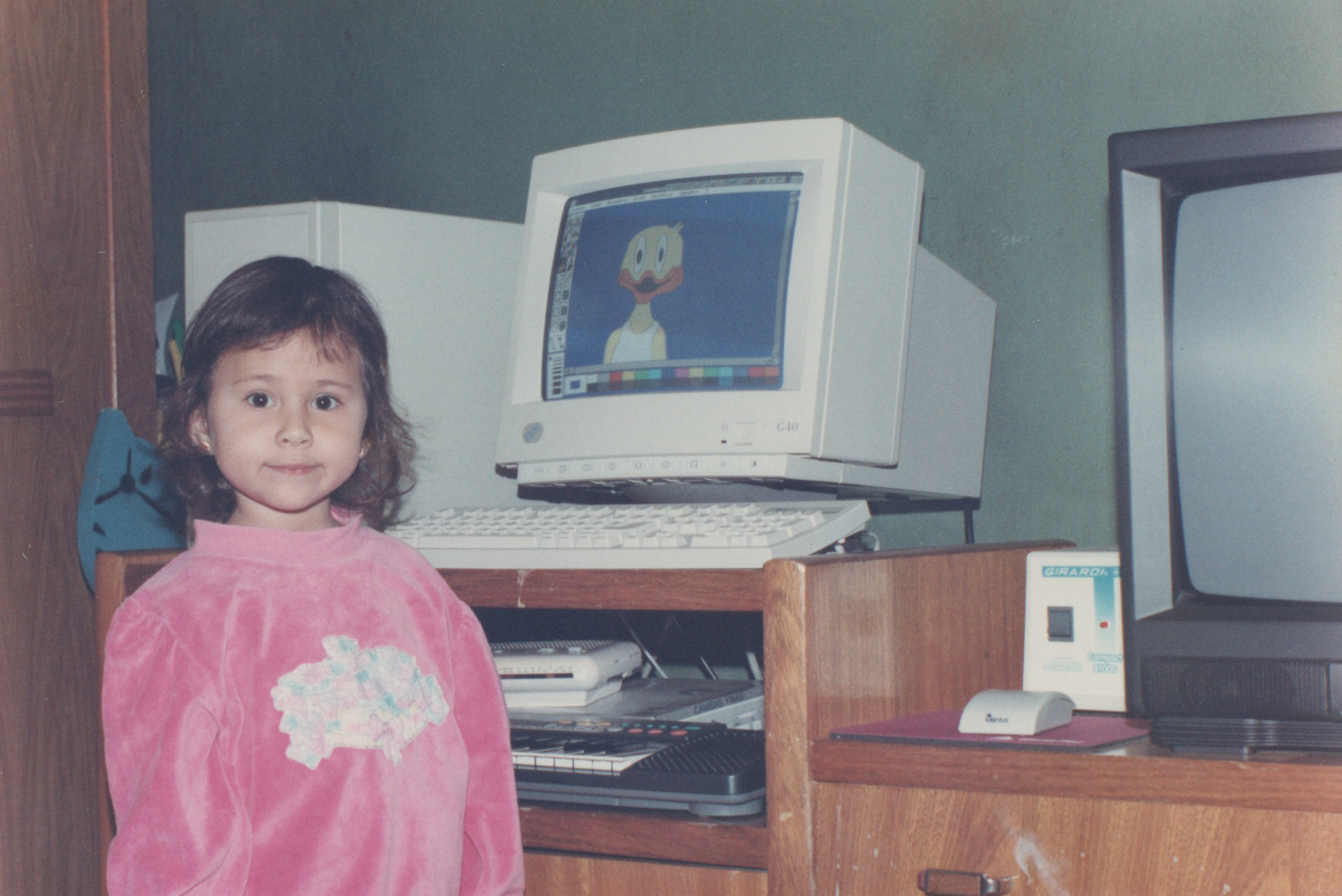About me and this page
Hello, I am Natalí de Santi, a physicist working with Machine Learning (ML) applied to Cosmology. I have interests in cosmology (specially in the large scale structure of the Universe, dark matter, dark energy, cosmological covariance matrices, parameter inference, N-body and hydrodynamical simulations, and halo-galaxy connection), data science, machine learning and programming. Currently, I am a final year PhD candidate at University of São Paulo (USP) under the supervision of Dr. Luis Raul Weber Abramo (USP) and Dr. Francisco Villaescusa-Navarro (Flatiron Institute).
First things first, a little about me:
Since I was a child, I have been fascinated by science, particularly Astronomy and Physics, as well as computers. As you can see in the picture below, when I was only 4 years old, I had a strange ability to draw cute ducks in Paint.

This passion led me to participate in Astronomy Olympiads from a young age. During high school, I had the opportunity to engage in experimental highscholl research to work on superconductivity with Dr. Antonio Carlos Hernandes at USP, in São Carlos. This opportunity served as the catalyst for me to choose to study Physics over Astronomy. I completed my undergraduate degree at USP in my hometown. At the beginning of my undergraduate course, I continued with experimental undergrad research in material physics within the same research group (the former CCMC). My interest in computation and theoretical physics eventually led me to my second undergrad research project, focusing on Particle Physics, under the guidance of Dr. Attilio Cucchieri. After completing my undergraduate degree, I changed universities to pursue my master’s degree at the Federal University of São Carlos (UFSCar), working under the supervision of Dr. Raphael Santarelli. During this period, I had the opportunity to delve into General Relativity and Quantum Field Theory in Curved Spacetime. My research included a review of Hawking radiation and discussions on the temporal evolution of a Schwarzschild black hole’s mass, taking this effect into account.
Today, during my PhD studies, I have the privilege of delving into the field of Cosmology, now at the University of São Paulo, in the capital city. More than that, I had the opportunity to work as a guest researcher and a CCA predoc at the Flatiron Institute, during September 2022 to August 2023, being able to go abroad for the first time in my life. Broadly speaking, my current research focuses on applying ML methods to address cosmological problems. Specifically, my work includes:
1) Recently, we developed a ML model—a Graph Neural Network (GNN) combined with a Moment Neural Network (MNN)—to extract information from smaller scales than ever before. More details about this work can be found here. This model has proven to be robust against five different sub-grid physical models, various halo/subhalo finders, and changes in cosmological and astrophysical parameters, including those not encountered during the training phase. However, observations are influenced by various effects, including 1) masking, 2) uncertainties in peculiar velocities and radial distances, and 3) different galaxy selection criteria. I am currently on a journey to demonstrate that GNNs can be used to overcome these challenges as well. More details are available here). Also, I worked with Symbolic Regression to explain the GNNs applied to halos and the reason behind the success of Astrid, as the best hydrodynamic simulation to obtain a robust ML model.
2) I have been working on improving cosmological covariance matrices using data from ExSHalos and Quijote simulations by employing image denoising techniques. Further information can be found in our paper).
6) I’m also involved in bridging the connection between halos and galaxies, specifically for central galaxies. Particularly, I am interested in recovering the scatter intricate relations of this connection. You can learn more about this research in our first work), second work and a bit of Normalizing Flows here.
This new journey is being wonderful!
This page:
In this page I want to share a little about the fantastic world of my research topic (and correlated ones) and my work until now. So, you could see since how to simulate the Universe on a computer to machine learning techniques.
